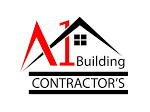When embarking on the journey of building a new home or remodeling an existing one, understanding the residential construction type codes is crucial. These codes serve as the backbone of building safety and efficiency, ensuring that structures are safe, sustainable, and compliant with local regulations. Construction codes are a set of standards designed to ensure that buildings are structurally sound and provide a safe environment for occupants. They cover a wide range of considerations, including fire safety, structural integrity, and energy efficiency.
Residential construction codes are not one-size-fits-all; they vary based on location, climate, and the specific needs of a community. This means that a home being built in a hurricane-prone area will have different requirements than one in a desert climate. Builders and homeowners must familiarize themselves with the relevant codes to avoid costly delays and ensure the safety and longevity of their projects.
At A1 Building Contractors, we understand the complexities of navigating these codes and are here to assist you in every step of the construction process. Whether you’re considering building an accessory dwelling unit or a custom home, our expertise ensures that your project meets all necessary standards while reflecting your unique style and needs. Dive into this comprehensive guide to learn more about how these codes shape the future of residential construction and how they can impact your building decisions.
Importance of Construction Type Codes
The importance of residential construction type codes cannot be overstated, as they are essential for ensuring the safety and durability of homes. These codes are meticulously crafted to address potential risks and challenges that buildings may face, from natural disasters to everyday wear and tear. By adhering to these codes, builders can significantly reduce the likelihood of structural failures and safety hazards.
One of the primary roles of construction codes is to protect the health and safety of the occupants. They ensure that homes are built to withstand environmental stresses such as earthquakes, floods, and fires, which could otherwise result in catastrophic loss. Compliance with these codes also means that buildings are equipped with necessary safety features, such as fire-resistant materials and adequate ventilation systems, contributing to a safer living environment.
Apart from safety, construction codes play a crucial role in promoting energy efficiency. With the growing emphasis on sustainability, these codes include standards for insulation, heating, and cooling systems, helping homeowners reduce energy consumption and lower utility bills. Moreover, they contribute to environmental conservation by encouraging the use of sustainable building materials and practices.
For homeowners and builders, understanding and implementing these codes can also prevent legal issues and financial penalties. Non-compliance can lead to hefty fines, legal disputes, and potentially having to redo construction work, which can be both time-consuming and costly. Hence, construction type codes are indispensable in creating homes that are not only safe and efficient but also compliant and sustainable.
In conclusion, residential construction codes will continue to evolve, driven by technological innovations, environmental considerations, and societal needs. Staying informed about these trends is crucial for anyone looking to build or renovate a home, ensuring compliance with the latest standards and optimizing the safety, efficiency, and sustainability of residential spaces.

Leave a Reply
You must be logged in to post a comment.